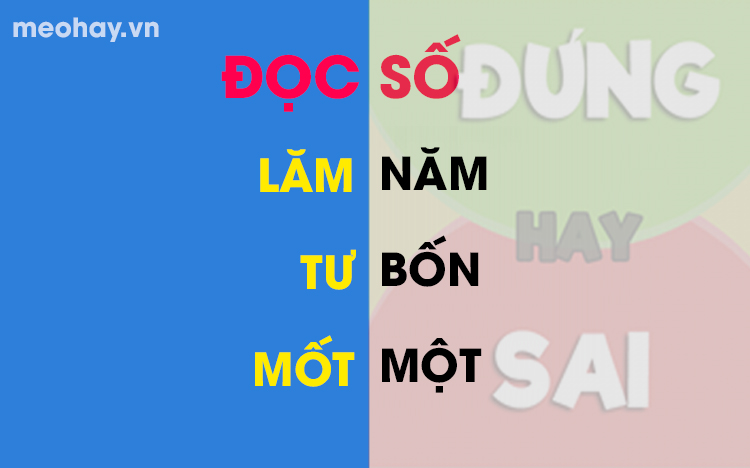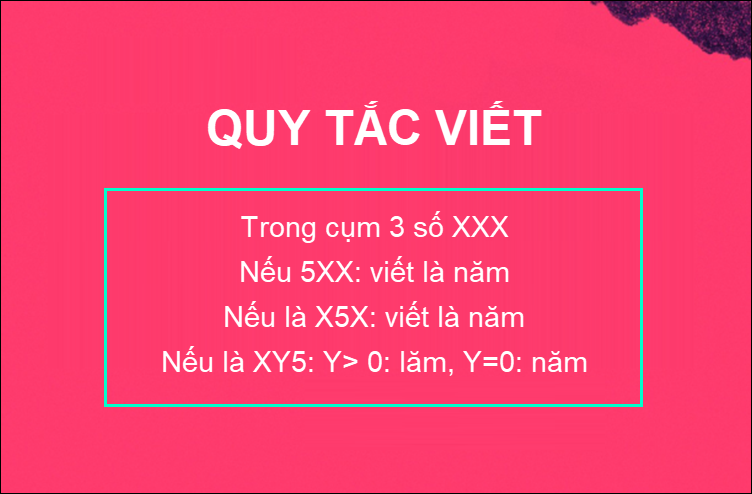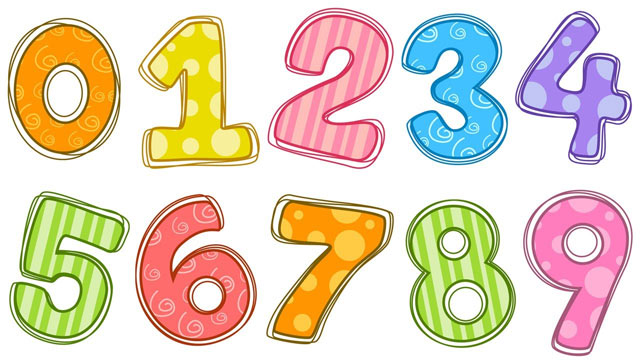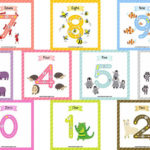How to Read and Write Natural Numbers Correctly
Reading large numbers can be tricky, especially when it comes to distinguishing between similar-sounding words like “mốt” and “một”. This guide will teach you the correct way to read and write natural numbers, ensuring accuracy in your financial and mathematical endeavors.
When encountering a long string of natural numbers, it’s important to divide them into groups of three, starting from the rightmost side. For example, the number 537,797,686 would be read as “năm trăm ba bảy triệu bảy trăm chín bảy nghìn sáu trăm tám sáu” in Vietnamese. This method helps ensure accuracy and clarity when dealing with large numbers.

Part 1: Reading Natural Numbers
To read natural numbers accurately, it is essential to separate the digits into groups of three, from right to left. This grouping helps us identify the different classes of digits: units, thousands, millions, and so on. When reading out the number, combine the numerical value with the class name.
Example:
537,797,686
Triệu nghìn đơn vị
Read as: Năm trăm ba bảy triệu bảy trăm chín bảy nghìn sáu trăm tám sáu.
Mastering the pronunciation of three-digit numbers is crucial for accurately reading larger numbers. Let’s explore some specific cases to enhance your understanding.
1. Numbers Ending with 1
When encountering a number ending with 1, there are two possible pronunciations: “mốt” and “một.” The choice between these options depends on the value of the tens digit.
Case 1: Read 1 as “một” when the tens digit is equal to or less than 1.
Examples:
501: năm trăm linh một
911: chín trăm mười một
67811: sáu mươi bảy nghìn tám trăm mười một
Case 2: Read 1 as “mốt” when the tens digit is greater than or equal to 2 and less than or equal to 9.
(Read as “mốt” when combined with the word “mươi” immediately before it.)
Examples:
891: Tám trăm chín mốt
689121: Sáu trăm tám mươi chín nghìn một trăm hai mươi mốt
2. Numbers with 4 as the Last Digit
When dealing with numbers ending in 4, there are again two possible pronunciations: “bốn” and “tư.” The choice depends on the value of the tens digit.
Case 1: Read as “bốn” when the tens digit is less than or equal to 1.
Examples:
6704: Sáu nghìn bảy trăm lẻ bốn
89514: Tám mươi chín nghìn năm trăm mười bốn.
Case 2: Read as “tư” when the tens digit is greater than or equal to 2 and less than or equal to 9.
(When reading “tư,” combine it with the word “mươi” immediately before it in the sentence.)
Examples:
324: Ba trăm hai mươi tư. (Ba trăm hai mươi bốn)
1944: Một nghìn chín trăm bốn mươi tư. (Một nghìn chín trăm bốn mươi bốn)
678934: Sáu trăm bảy mươi tám nghìn chín trăm ba mươi tư
(* Note: It is also acceptable to read “bốn” when the tens digit is 2 or 4.)
3. Numbers Ending with 5
To distinguish between counting numbers and time periods, the Vietnamese language uses two different pronunciations for the digit 5: “lăm” and “năm.”
In the context of writing monetary amounts with a trailing 5, there are two acceptable pronunciations: “lăm” and “năm.”

Case 1: Read as “năm” when the tens digit is 0 or when combined with a class name, or the word “mươi” immediately following.
Examples:
78905: Bảy mươi tám nghìn chín trăm lẻ năm
505155: Năm trăm linh năm nghìn một trăm năm mươi lăm.
Case 2: Read as “lăm” if the tens digit is greater than 0 and less than or equal to 9.
(Read as “lăm” when combined with the words “mươi” or “mười” immediately before.)
Examples:
9845: Chín nghìn tám trăm bốn mươi lăm
5555: Năm nghìn năm trăm năm mươi lăm
98675: Chín mươi tám nghìn sáu trăm bảy mươi lăm
Reading the Number 5 in Mathematics
Here are some examples of how to read numbers containing the digit 5:
5: Năm
15: Mười lăm
25: Hai mười lăm
50: Năm mươi
55: Năm mươi lăm
505: Năm trăm linh (lẻ) năm
515: Năm trăm mười lăm
1005: Một nghìn không trăm linh năm
1025: Một nghìn không trăm hai mươi lăm
And so on…
Example: Fifteen or Fifteen Years
Correct Answer:
– If referring to the number 15, the correct spelling is “mười lăm.”
– If referring to a duration of 10 years, the correct spelling is “mười năm.”
Explanation:
“Lăm” in this context is a noun referring to a cut of meat from the neck of a cow or pig. It is also used to count, following the number in the tens place. For example: Mười lăm, Ba lăm, Bốn lăm. Alternatively, “nhăm” can be used as a replacement. For instance, Bốn mươi nhăm, bốn nhăm…
“Năm,” on the other hand, is a noun representing a period of time in which the Earth completes a full revolution around the Sun, equivalent to 365 days, 5 hours, 48 minutes, and 40 seconds, or approximately twelve months. It is also used as the digit 5, following the number four in the natural number sequence. For example, a child is “năm” years old, or there are “năm” people in a group.
Therefore, when referring to a numerical sequence, the correct spelling is “mười lăm.” This distinction is especially important for accountants and those working with numbers to avoid confusion and errors.
Another Example: Fifty Years or Fifty-Five Years
The number 5 is read and written as “NĂM,” and the number 50 is read and written as “Năm mươi.”…
The number 15 is read and written as “Mười lăm” in correct Vietnamese spelling, not “Mười năm.”
When the number 5 is in the ones place, it is always read as “LĂM” (25, 55, 555, etc.), except in cases like 105, 205, 5505…. where it is read as “linh năm” or “lẻ năm.”
Additionally, from 25 to 95, it can also be read as “hai nhăm”… “chín nhăm,” but the written form remains “…mươi lăm.”
Why is it read and, more importantly, written as “LĂM” instead of “NĂM” or “NHĂM”?
There are several possible explanations:
1. This could be due to the influence of lisping the consonants “L” and “N.” Over time, this pronunciation became accepted as a standard.
2. Using “lăm” when reading numbers in conjunction with years makes it sound more harmonious (e.g., 1555 years is read as “Một nghìn năm trăm năm mươi lăm năm”). However, if this is the reason, why not use “nhăm” in all cases? (For example, reading 15 as “mười nhăm”).
3. Both of the above reasons are valid.
4. There may be another explanation that we are unaware of.
Part 2: Writing Natural Numbers
To write natural numbers correctly, students must understand the following concepts:
– Write numbers according to their classes (from left to right).
– Write numbers in descending order, from the highest class to the lowest.

1. Writing Numbers Based on Given Verbal Expressions
– Identify the classes of the numbers.
– Determine the digits belonging to each class.
(Note: When reading numbers, do not verbalize the class name for the units. Therefore, the group of digits to the right of the thousands class represents the verbal expression for the units.)
Example: Write the following number:
– Năm mươi sáu triệu chín trăm mười hai nghìn ba trăm bốn mươi bảy.
=> Teachers should guide students to identify the following:
– Năm mươi sáu triệu chín trăm mười hai nghìn ba trăm bốn mươi bảy.
56 (class name) 912 (class name) 347
=> Write the number as: 56,912,347
Example:
+ Write the number, knowing that it consists of: 1 hundred million, 8 million, 5 hundred thousand, 6 tens of thousands, 3 thousand, 9 tens, and 8 units.
=> Teachers should guide students to identify the following:
+ List the classes in descending order of magnitude.
trăm triệu chục triệu triệu trăm nghìn chục nghìn nghìn trăm chục đơn vị
1 0 8 5 6 3 0 9 8
1 trăm triệu, 8 triệu, 5 trăm nghìn, 6 chục nghìn, 3 nghìn, 9 chục, 8 đơn vị.
+ Determine the values of each class and write them in their respective positions.
=> Write the number as: 108,563,098
2. Reading and Writing Numbers for Tax Purposes
To read natural numbers accurately, follow these steps:
+ Divide the number into groups of three digits, from right to left.
+ Read the number by combining the numerical value with the class name.
Example:
Read as: Năm trăm bốn mươi bảy triệu tám trăm chín mươi hai nghìn bảy trăm năm mươi tám
Accurate reading of three-digit numbers is essential to avoid mispronouncing larger numbers.
Many accountants and readers are unsure about the rules for reading and writing digits, especially when it comes to numbers ending in 1, 4, or 5. There are two acceptable pronunciations for each of these cases, and the correct choice depends on the value of the tens digit.
– Numbers Ending with 1
For numbers ending with 1, the possible pronunciations are “mốt” and “một.” The following rules dictate which pronunciation to use:
– Read 1 as “một” when the tens digit is equal to or less than 1.
Examples:
301: ba trăm linh một
711: bảy trăm mười một
456901: bốn trăm năm mươi sáu nghìn chín trăm linh một
– Read 1 as “mốt” when the tens digit is equal to or greater than 2.
Examples:
731: bảy trăm ba mươi mốt
966751: chín trăm sáu mươi sáu nghìn bảy trăm năm mươi mốt
– Numbers with 4 as the Last Digit
For numbers ending with 4, the possible pronunciations are “bốn” and “tư.” The following rules determine which pronunciation to use:
– Read 4 as “bốn” when the tens digit is equal to or less than 1.
Examples:
46704: bốn mươi sáu nghìn bảy trăm lẻ bốn
325614: ba mươi hai triệu năm trăm sáu nghìn một trăm mười bốn
98767804: chín mươi tám triệu bảy trăm sáu mươi bảy nghìn tám trăm lẻ bốn
– Read 4 as “tư” when the tens digit is equal to or greater than 2.
Examples:
547864: năm trăm bốn mươi bảy nghìn tám trăm sáu mươi tư
312908674: ba trăm mười hai triệu chín trăm lẻ tám nghìn sáu trăm bảy mươi tư
Note: It is acceptable to read 4 as either “tư” or “bốn” when the tens digit is 2 or 4.
Examples:
324: ba trăm hai mươi bốn or ba trăm hai mươi tư
744: bảy trăm bốn mươi bốn or bảy trăm bốn mươi tư
– Numbers Ending with 5
For numbers ending with 5, the possible pronunciations are “lăm” and “năm.” The following rules determine which pronunciation to use:
– Read 5 as “lăm” when the tens digit is greater than 0 and less than or equal to 9.
Examples:
1125: một nghìn một trăm hai mươi lăm
10395: mười nghìn ba trăm chín mươi lăm
– Read 5 as “năm” when the tens digit is 0 or when combined with a class name or the word “mươi” immediately following.
Examples:
9705: Chín nghìn bảy trăm lẻ năm
987546: Chín trăm tám mươi bảy nghìn năm trăm bốn mươi sáu
506455: Năm trăm linh sáu































